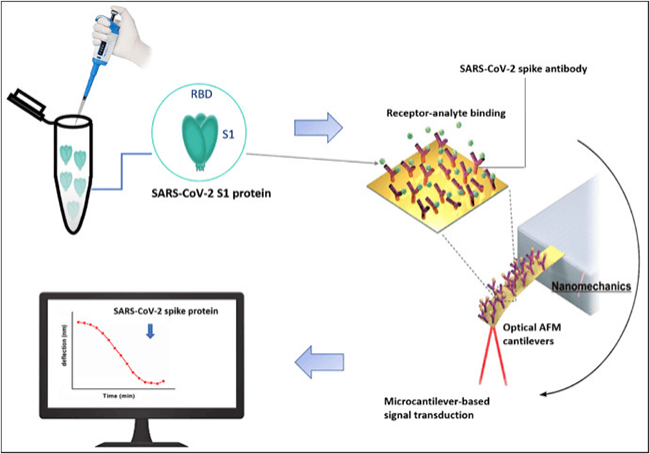Researchers create sensor able to detect COVID and other viruses in minutes
| 05-04-2022 | By Robin Mitchell
Recently, researchers have been able to develop a sensor that can detect the presence of COVID and other viruses that produces results in less than 5 minutes. What challenges do typical PCR and rapid tests present, what did the researchers develop, and how can its use go beyond COVID?
What challenges do typical PCR and rapid tests present?
While the COVID pandemic of 2020-2022 was one of the worse since the Spanish Flu of 1918, the world was extremely lucky in the low mortality rate, the availability of modern medicine, and the speed at which a vaccine was produced. The ability to limit the spread of the virus was achieved with the use of lockdowns, strict controls, and widespread testing to identify those who had contracted the virus.
In this fight against COVID, the PCR and rapid tests proved themselves to be invaluable assets, with PCR testing providing accurate results while rapid testing allowed for quick identification of infected individuals (of course, rapid tests are not 100%, but it is better than nothing). However, both of these testing technologies have drawbacks that limit their abilities in current and future pandemics.
In the case of PCR testing, the virus first must have its genome mapped, and this is an expensive process that can be time-consuming. Once mapped, future PCR tests can provide accurate testing, but this can take more than a day to accomplish, depending on the resources available and the number of tests being carried out.
In the case of rapid testing kits, their technology can take time to develop (much longer than PCR), which means that they are seldom available during the pandemic's peak. Furthermore, their lower accuracy can see infected individuals continue to spread a virus, and their inability to detect new strains can make them ineffective against mutations.
Johns Hopkins researchers create sensors for rapid virus detection
Recently, researchers from Johns Hopkins University have developed and demonstrated a sensor that can rapidly identify the presence of COVID viruses in a sample in under five minutes.
The sensor uses a microcantilever made from gold that has antigen spikes attached to its surface to detect virus samples. Upon binding with COVID proteins, the resulting tensile forces in the cantilever cause it to deflect, and the use of lasers allow for the detection of this deflection. To make more sense of even smaller detection levels, the researchers used a machine-learning algorithm to ensure reliable detection of COVID proteins.
What makes the sensor unique is that the researchers could also make the sensor operate with different viruses with little difficulty. This means that a future pandemic could quickly see a new antigen coating applied to the microcantilever and then rolled out for accurate, rapid testing. Furthermore, the sensitivity of the new sensor has been reported to be around 98% which puts it on par with current PCR technologies.

Fig. 1. Optical detection scheme for SARS-CoV-2 S1 (RBD-Receptor Binding Domain) protein on a microcantilever surface.
How can such sensors be used in future pandemics?
Current testing methods that use chemical reactions such as genome sequencing and specific antigen reactions take time to develop, and while they are highly selective, they are extremely rigid in use. This means that the introduction of a mutation or an entirely new virus requires researchers to go back to the drawing board to identify the new genome and then develop tests for it.
However, if an electronic method for identifying viruses could be developed that provides the same degree of sensitivity and selectivity (i.e., only identifying a specific type of virus), then not only would testing be rapid, but it would be able to adapt to changes in real-time. While it may not remove the cost of finding the genome sequence of a new virus, the detection settings needed on a sensor could be instantly provided to testing kits as an update.
Furthermore, the use of machine learning in virus-detection sensors would also present valuable data for the medical community. The gathering of data from all sensors could be used to identify new strains before they can spread, thereby potentially removing the need for lockdowns and social distancing.

